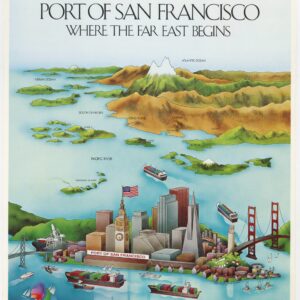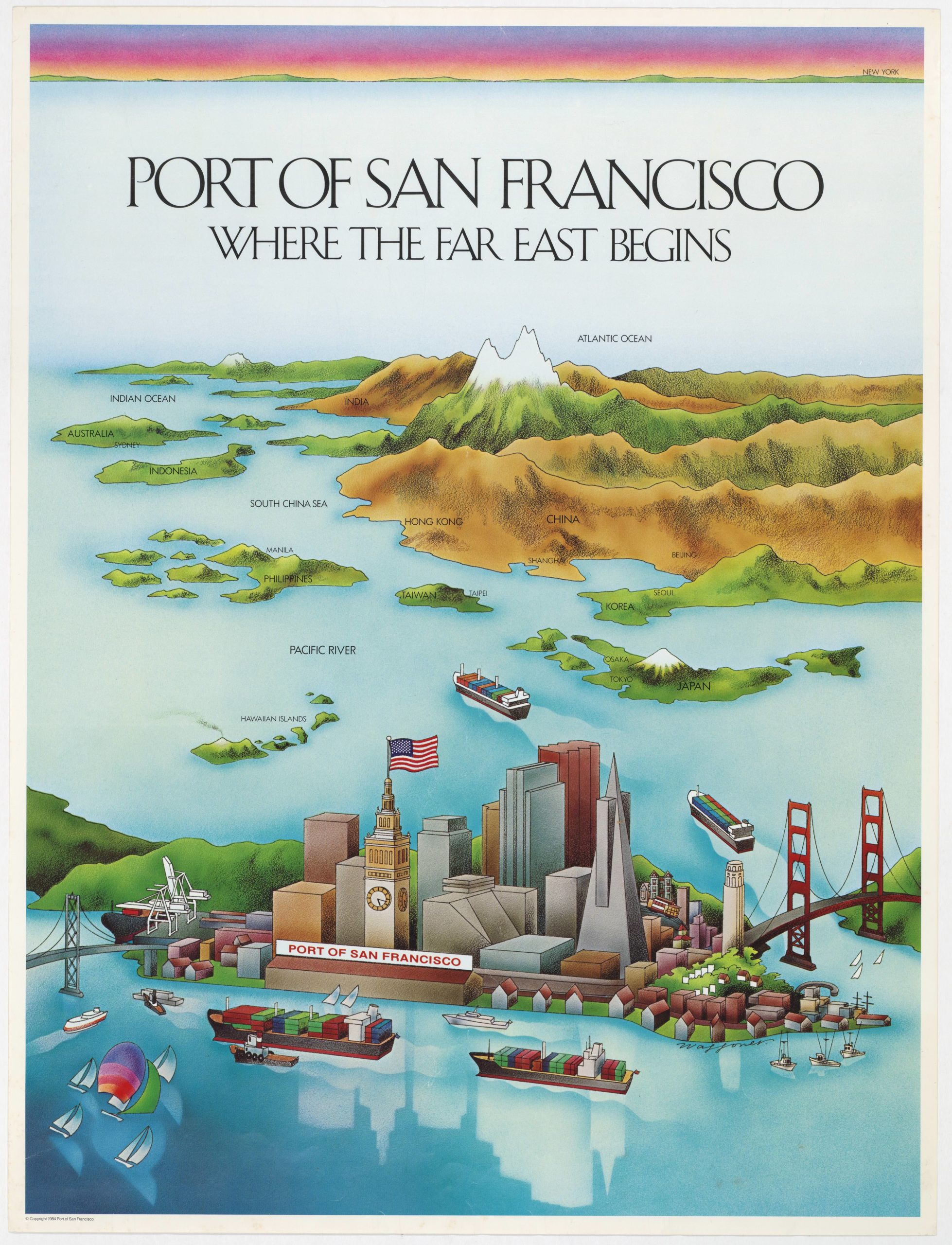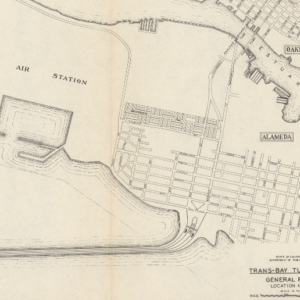Large, impressive San Francisco water supply system map.
General Map of the Surveys for the San Francisco Water Supply made under the direction of the Board of Supervisors…
$600
1 in stock
Description
With the quality and clarity one would expect from a work designed by George Allardt and engraved by George Baker, this map documents the ever-increasing extent of the Spring Valley Water Works into not just Alameda and Santa Clara Counties, but east to the Sierra Nevadas, all in an effort to supply an expanding population of San Francisco with water.
Cartographer(s):
George F. Allardt (died July 27, 1903) was a civil engineer based in San Francisco who conducted extensive surveys of the State of California. He is most known for being the lead surveyor for the Board of Tide Land Commissioners (BTLC), which was charged with defining the high tide line for the Bay Area, thus forming the basis for the official reclamation of tidal lands in the Bay Area. Allardt was deeply involved in the survey and subdivision of 17,000 acres of the San Pablo Rancho. At the time, it was one of the largest surveys ever made in California. Moreover, he created Allardt’s Official Map of Alameda County.
George Holbrook BakerGeorge Holbrook Baker (1827-1906) was a Massachusetts-born artist who learned his trade from the New York engraver George C. Smith. Following his apprenticeship, Baker attended the National Academy of Design before emigrating to California during the height of the Gold Rush. He arrived in San Francisco in late May 1849, and within three months, his first views of the town were being published in New York.
Baker briefly tried his luck prospecting for gold, but like so many other emigrants, he found that it was easier to make a living using the talents and skills with which he arrived. Even today, it is a commonly held notion that the people who became rich from the Gold Rush were the shovel and pan-sellers rather than the prospectors themselves.
In 1852, Baker moved from San Francisco to the new state capital at Sacramento, where he started several businesses and two periodicals while also creating new and sought-after views of northern California. In 1857, Baker drew and published a large birds-eye-view of the young ‘City of the Plain’ (printed as a lithograph by Britton & Rey in San Francisco), which achieved enormous popular success. In 1862, after a devastating flood had ruined him, Baker moved back to San Francisco and started a lithography and publishing firm that specialized in advertising and posters, including architectural and urban vistas, dedicated stock certificates, and regional maps. Despite more than a decade of success, his company was gradually outcompeted during the 1880s, and by around 1890, Baker closed his doors and retired.
Despite his ending in commercial failure, George Baker is acknowledged as one of the most significant artists and lithographers of the Gold Rush era. His work constitutes some of the most important visual documentation of California during the formative decades of its incorporation into the United States.
T. R. ScowdenCondition Description
Excellent.
References
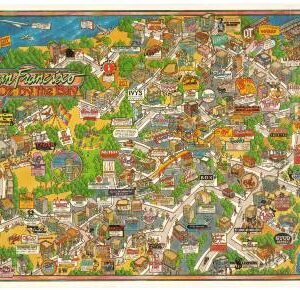
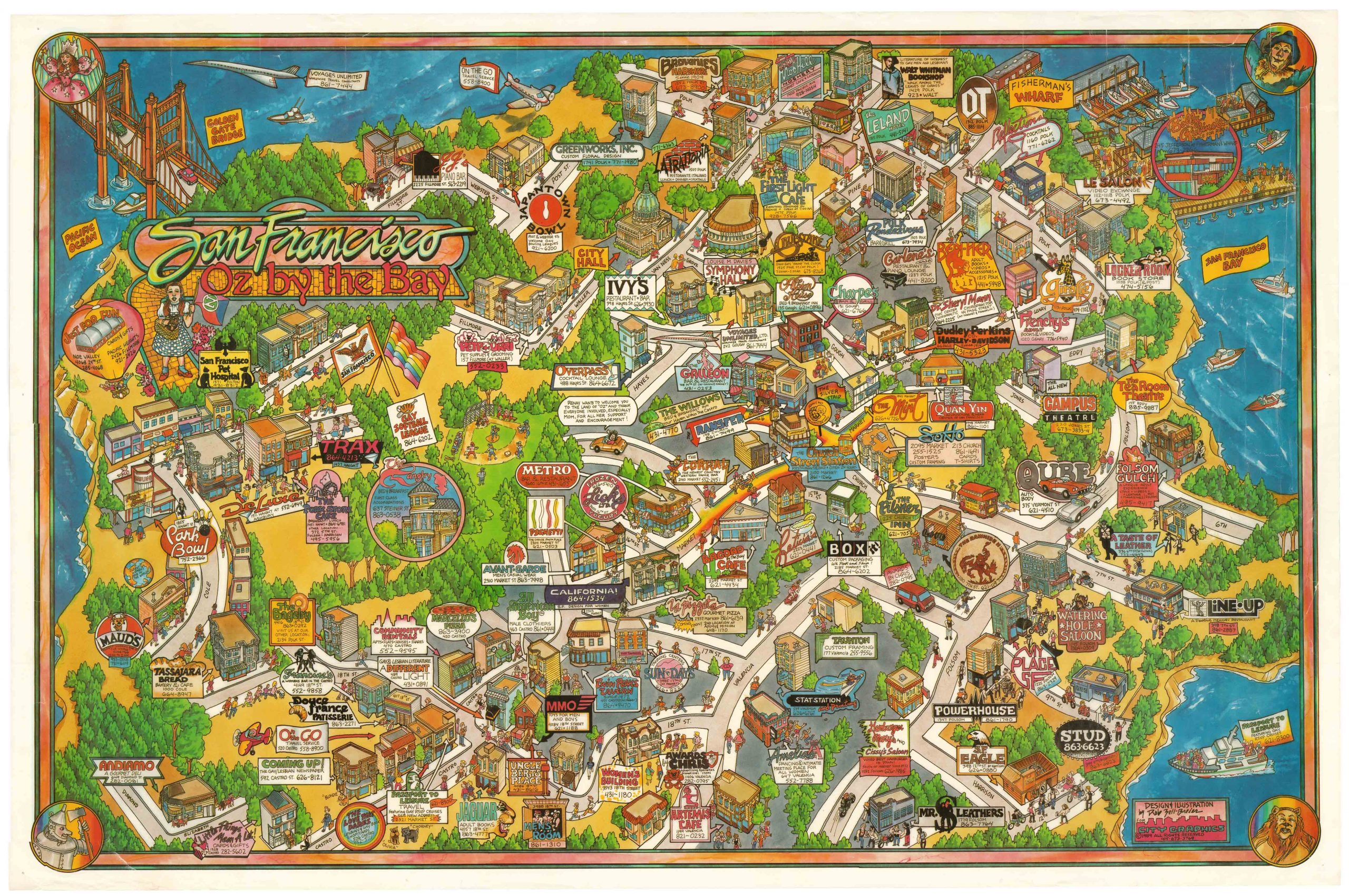
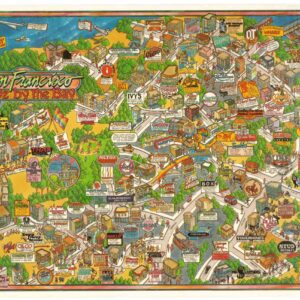
![[1906 EARTHQUAKE PANORAMA – FINANCIAL DISTRICT]](https://neatlinemaps.com/wp-content/uploads/2020/10/Screen-Shot-2023-02-06-at-6.55.56-PM-300x300.png)
